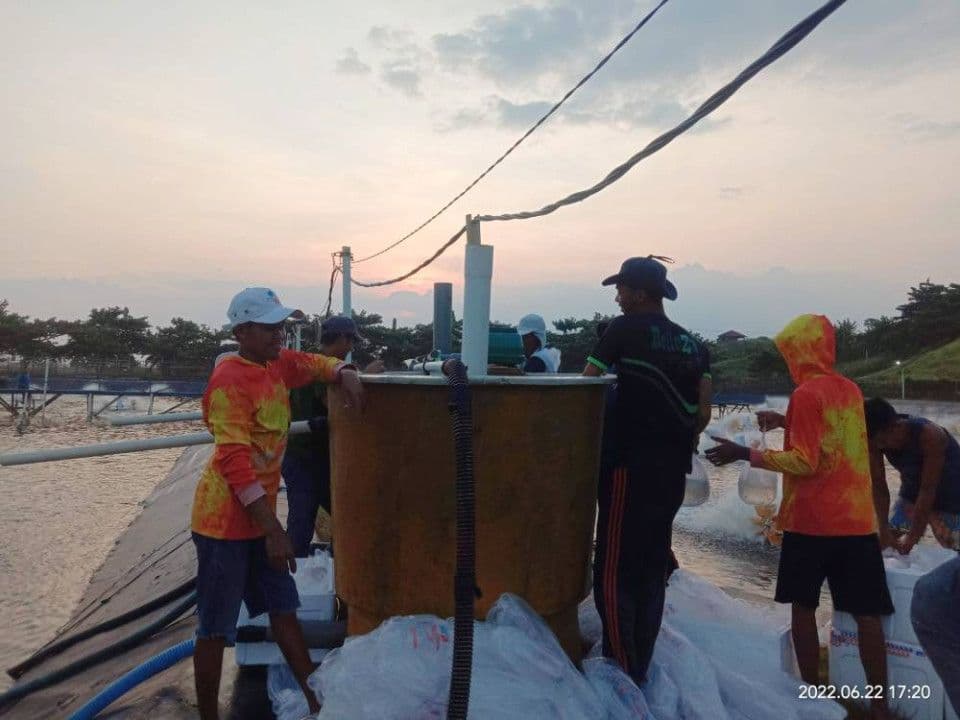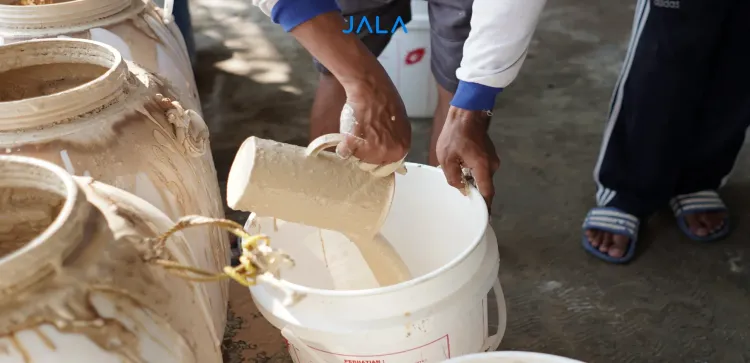
Implementing crucial steps before shrimp fry stocking
Shrimp fry stocking is one of the most crucial stages of shrimp cultivation after preparation of shrimp pond and water. Shrimp fry conditions determine the success of every cultivation. Here are 5 things to consider before shrimp fry stocking.
Ensuring pond readiness
To ensure that the shrimp pond is ready for spreading, the Day of Preparation (DOP) stage must fulfill standards. These standards can be assessed by the following pond water parameters: pH, DO, temperature, and salinity. These parameters must meet or fall around the ideal levels for proper shrimp fry development.
Checking of shrimp fry document
Once the shrimp fry has arrived at the shrimp farm, check the respective documents thoroughly. Documents such as the Specific Pathogen Free (SPF) and Specific Pathogen Resistant (SPR) statements must be attached.
SPF declares that shrimp fry is free of pathogens such as viruses that cause WSSV, TSV, and IHHNV, while SPR shows that the shrimp fry is genetically resistant to these pathogens. With these two documents, shrimp farmers can be certain that the hatchery has conducted proper assessment under strict biosecurity measures before the shrimp fry is delivered.
Shrimp fry sampling
To confirm the shrimp fry quality, sampling can be done prior to spreading. At least 3 bags per 1 million shrimp fry or 2 bags per code may be sampled.
Shrimp fry quality determines the success of shrimp cultivation. Before stocking, sampling is required to confirm the shrimp fry quality. At least 10% of the total shrimp fry can be sampled. That way, farmers can get a clearer estimate of the fry quality without having to stock the whole batch, making it more efficient.
Assessment of water quality and shrimp fry physical condition
The parameters for water quality are pH, temperature, Dissolved Oxygen (DO), and salinity. These parameters must be checked to know whether the water quality has changed upon delivery from the hatchery to the shrimp farm. If there is a significant difference between the water quality in the bond and the shrimp fry bag, longer acclimatization is needed. On the other hand, similar water quality means acclimatization can be reached faster and the shrimp fry’s survival rate can be higher.
Necrosis and bolitas examinations need to be carried out in a laboratory to assess the shrimp fry’s physical condition. A necrosis examination is done to determine the amount of necrosis or deaths in shrimp fry organs. Necrosis can be identified from the sloughing of epithelial cells on the tubules that result in a darker or reddish color on the cells. Bolitas examination checks for the presence of ball-like shapes on the shrimp fry’s hepatopancreatic tissue. These balls indicate deformities in the shrimp fry’s organs, which may be caused by stress during the delivery process.
Counting of actual shrimp fry numbers
Counting the actual numbers of the shrimp fry is essential as it affects the spread density of each pond. If the shrimp fry numbers are more than the predetermined spread density, the pond’s carrying capacity will be affected as well.
The actual numbers of the shrimp fry can be counted during sampling, using a big and small pail, a hand tally counter, and a scooping tool. Pour the whole shrimp fry into the big pail, scoop it and count the number of live and dead shrimp fry. Move the counted shrimp fry into the small pail. This process can be done by 2-3 people for better efficiency.
By carrying out these 5 steps, farming failure can be mitigated. Hopefully, this information will be of good help for shrimp farmers to carry out their cultivation operation systems more optimally to reach their harvest goals!
References
Dharmawan MRMB, Julyantoro PGS, Hermawati A, Sari W. 2020. Profil histologi hepatopankreas udang vaname (Litopenaeus vannamei) dikultur dengan padat tebar berbeda. Current Trends in Aquatic Science. 3(1): 81-87.
Hamzah, Jumriadi, Asa’at M, Fauzia. 2020. Kasus nekrosis kaki renang udang pada tambak tradisional yang mengaplikasikan probiotik. Journal of Aquatropica Asia. 5(1): 9-15.





